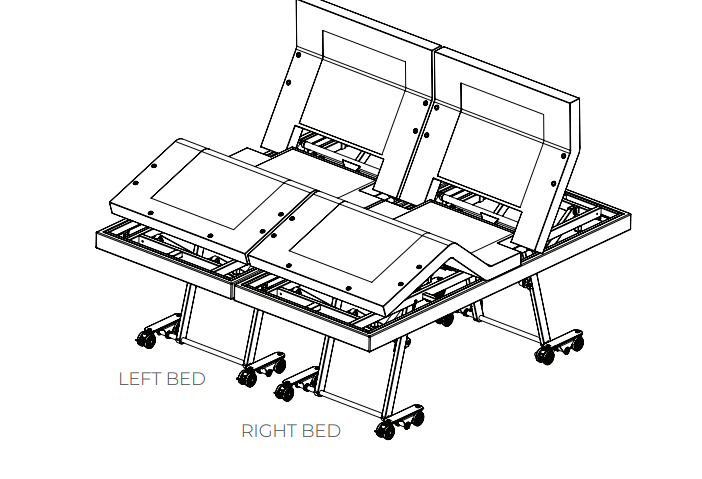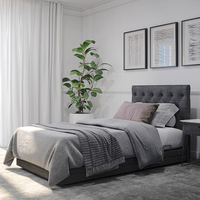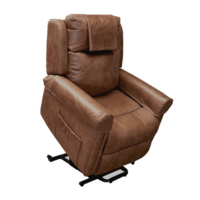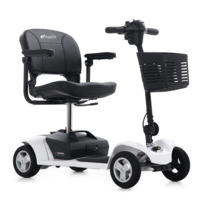Should You Get An Adjustable Bed? Benefits for Every Sleeper
If you’ve ever experienced a restless night’s sleep, you’ll know how frustrating it is. No matter how much you toss and turn, shift and adjust, you just can’t find a comfortable position to fall asleep in. And the next day, you feel cranky and unfocused.
If you’re tired of searching for that elusive comfort that allows you to fall asleep – and stay sleeping all night – an adjustable bed may be the answer.
Not just for older people or those with chronic health issues, many more people are seeking out adjustable beds thanks to the extra comfort and luxury they deliver.
What is an adjustable bed?
Simply, an adjustable bed is a motorised bed that allows you to change the position of your feet, back and head. The adjustable bed base is split into sections. A handheld remote allows each of these sections to move, allowing you to configure the bed base in various positions.
Some adjustable beds also can also be raised and lowered, making it easier to get into and out of bed.
Why get an adjustable bed?
In recent years, people have become increasingly concerned about sleep quality. Research has shown that how well we sleep affects more than how we feel the next day. Short-term, poor sleep can impact stress-levels, concentration and memory. And ongoing sleep deprivation is linked to cognitive decline and an increased risk of dementia.
Given how important sleep is for health and general wellbeing, investing in the right bed is a simple way to make sure you’re creating the best sleep environment possible.
Who are adjustable beds recommended for?.png)
Doctors and allied health professionals tend to recommend adjustable beds for certain health issues. But adjustable beds can be used by anyone, whether you have a clinical recommendation or not.
These are just a few of the situations where an adjustable bed can help improve sleep quality:
- Back pain – Adjustable beds can provide immense relief for people with back pain or sciatica. Elevating the back and legs or using the zero position takes weight off the spine, making it more comfortable to go to sleep and easier to wake up in the morning.
- Lie-flat sleeping is uncomfortable – Not everyone finds sleeping on a flat surface comfortable. If you’re using pillows to find a more upright position, an adjustable bed is a great alternative. No more pillows slipping in the night. And you can easily adjust your position without too much movement.
- Sleep apnoea or snoring – An inclined position is often recommended for heavy snorers or people with sleep apnea as it can help open up the airways and make breathing easier.
- Heartburn – Lying down can often make symptoms of heartburn worse. A slightly elevated position can prevent reflux and stop that burning sensation in your throat in the middle of the night.
- Aching legs – People who spend a lot of time on their feet during the day often experience relief when placing their legs in an elevated position. You may like to simply lie in this position before bed, or keep the legs raised while you sleep.
- Working in bed – If your WFH routine involves some work-from-bed (no judgement!) you might consider an adjustable bed to reduce back and neck strain.
- Pregnancy and postpartum – Pregnancy can place a lot of strain on the body. Things like back pain and reflux make finding a comfortable sleep position difficult. And postpartum recovery, along with night feeds, mean a comfortable, adjustable sleep surface is a must.
What is zero gravity on an adjustable bed?
You may have heard the term zero gravity adjustable bed. The zero gravity feature places your body in a neutral sleeping position with your legs raised and head tilted forward. In this position, your legs are slightly elevated above your head and your spine is in a neutral position. This position promotes circulation, supports your spine, opens up airways and makes it easy to fall and stay asleep.
Cons of an adjustable bed
Adjustable beds are on the higher side when it comes to the average cost of a bed. Not only are you buying a motorised bed base, you’ll also need to purchase a suitable mattress – one that’s designed to flex and bend the way an adjustable bed does.
They’re also much heavier than a standard bed. Once in position, they can be difficult to move without lots of help.
If you opt for a split adjustable bed (where both sides can be moved independently), there may be a small gap down the middle. Although models like the ComfiMotion bed have a minimal gap that’s barely noticeable when the bed is made up.. And be aware that you’ll need to make both sides of the bed up with separate single fitted sheets.
Is an adjustable bed worth it?
There’s no getting around it, adjustable beds can be a significant investment. However, if you value your sleep and the difference it makes to your general health and wellbeing, that investment can be well worth it.



























